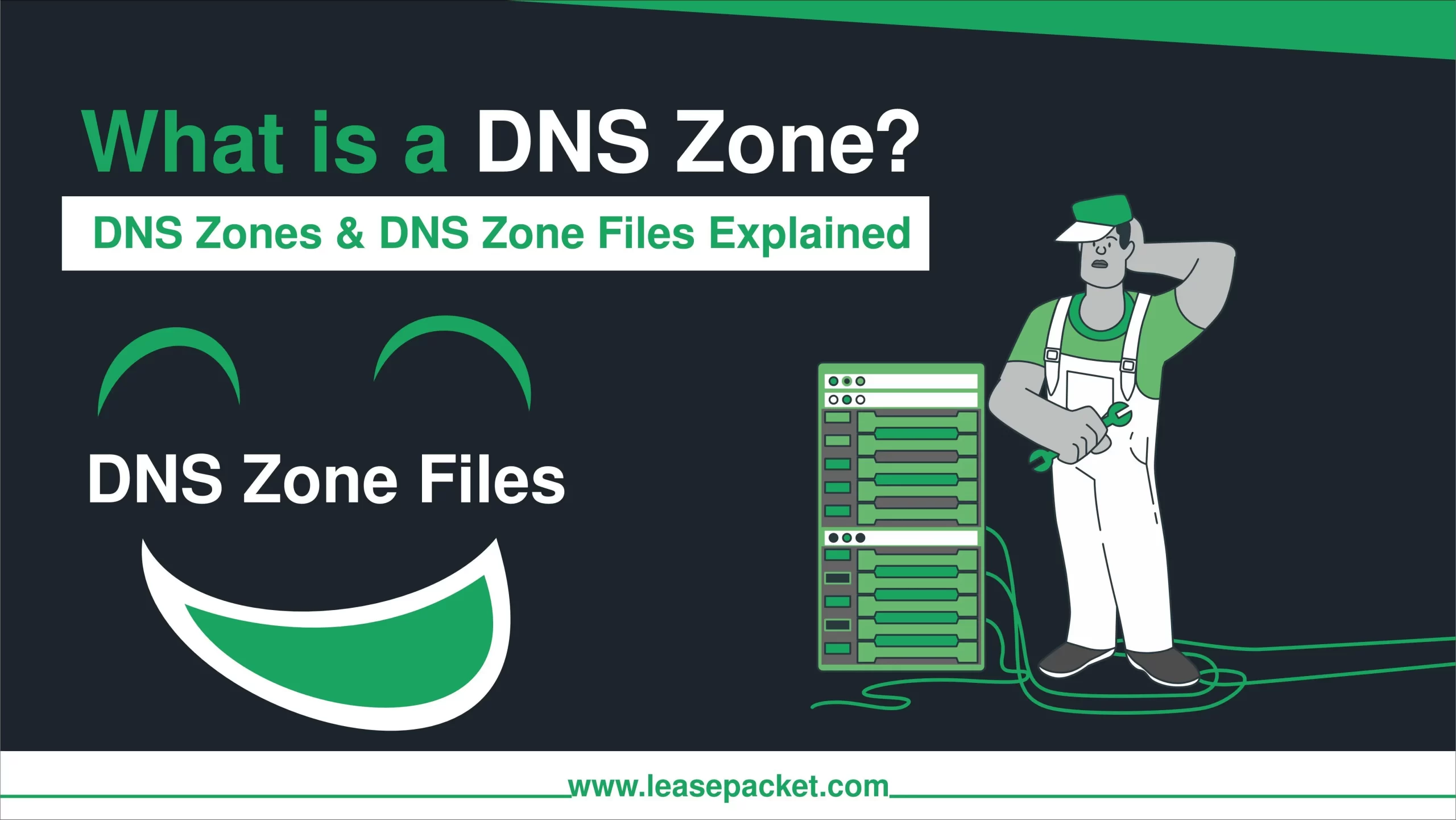In the networking space, understanding the concept of DNS zones is essential. A DNS zone acts as the administrative unit for managing domain name resolution. Today, we will explore the fundamentals of DNS zones, types, benefits, and how they boost a dependable domain name resolution system in this digital world.
Table of Contents
What is a DNS Zone?
The DNS (Domain Name System) enables a computer to recognize & translate a domain name like google.com into an IP address like 74.125.226.72. A DNS zone is a contiguous portion of the DNS namespace managed by a specific organization, typically represented by a domain name. It encompasses a collection of DNS records that define the mapping between domain names and corresponding IP addresses or other resources. A DNS zone is a logical partition of the DNS infrastructure that allows administrators to manage & control DNS resolution for a specific domain or subdomain.
Importance of DNS Zone
DNS zones facilitate the efficient & scalable management of domain name resolution within the DNS infrastructure. By dividing the DNS namespace into discrete zones, administrators can define & control the authoritative DNS information for their respective domains, enabling them to configure DNS settings, manage resource records, and implement access controls tailored to their specific requirements.
Components of a DNS Zone
A DNS zone typically consists of several components, each serving a specific function within the DNS infrastructure.
1. SOA (Start of Authority) Record
The SOA record is a fundamental component of a DNS zone that contains authoritative information about the zone, like the zone’s primary name server, the zone administrator’s email address, and various timing parameters that govern zone operations.
2. NS (Name Server) Record
NS records specify the authoritative name servers for the DNS zone, indicating which servers are responsible for providing DNS information and resolving queries related to the zone.
3. Resource Records
Resource records (RRs) define the mappings between domain names & corresponding IP addresses or other resources within the DNS zone.
What is a DNS Zone File?
A DNS zone file is a text-based configuration file that contains the DNS records for a particular DNS zone. It serves as the authoritative source of information for the DNS server responsible for resolving queries related to that zone. DNS zone files typically include various resource records like A records for IPv4 addresses, AAAA records for IPv6 addresses, CNAME records for aliases, MX records for mail exchange servers, and NS records for authoritative name servers. Start of Authority (SOA) Record & Global Time to Live (TTL) Record – these records must be included at the DNS zone files start.
What Does a DNS Zone File Look Like?
A typical DNS zone file consists of several sections, each containing specific types of resource records. These sections may include the SOA record, which specifies authoritative information about the zone; NS records, which indicate the authoritative name servers for the zone; and various other resource records defining the domain’s DNS mappings. The format of a DNS zone file is standardized and follows specific syntax rules defined by the DNS protocol.
Types of DNS Zones
DNS zones can be classified into several types – each serving a distinct purpose and catering to specific requirements.
1. Primary DNS Zone
The primary DNS zone is the authoritative source for DNS information about a domain. It is hosted on a primary DNS server, which maintains the original copies of the zone’s DNS records. It is also responsible for updating them as needed.
2. Secondary DNS Zone
A secondary DNS zone is a read-only copy of a primary DNS zone hosted on a secondary DNS server. It provides redundancy and load balancing for DNS resolution by allowing multiple servers to serve DNS queries for the same zone.
3. Stub DNS Zone
A stub DNS zone contains only minimal information about a domain, such as the NS records for the authoritative name servers. It is used primarily for delegation purposes, allowing DNS servers to locate the authoritative name servers for a domain.
4. Reverse DNS Zone
A reverse DNS zone is used to map IP addresses to domain names rather than other way around. It is commonly used for reverse DNS lookups, which associate an IP address with a corresponding domain name.
Benefits of DNS Zones
DNS zones offer several benefits for businesses & network administrators.
1. Granular Control
DNS zones provide administrators with granular control over DNS resolution for specific domains or subdomains, allowing them to tailor DNS configurations to their unique requirements.
2. Scalability
By partitioning the DNS namespace into discrete zones, organizations can scale their DNS infrastructure more effectively, accommodating growth and changes in network topology.
3. Redundancy & Fault Tolerance
Using secondary DNS zones and implementing zone transfers between primary & secondary servers enhances redundancy and fault tolerance, which ensures reliable DNS resolution even in the event of server failures or network disruptions.
4. Simplified Management
DNS zones streamline DNS management tasks by allowing administrators to focus on specific domains or subdomains, reducing complexity and facilitating more efficient administration of DNS resources.
Differentiate between a DNS Zone & DNS Server
While a DNS zone represents a logical partition of the DNS namespace, a DNS server is a physical or virtual server that implements the DNS protocol and responds to DNS queries from clients. A DNS server can host multiple DNS zones, each responsible for resolving queries related to specific domains or subdomains. In other words, a DNS server acts as the infrastructure that facilitates DNS resolution for one or more DNS zones – while a DNS zone is the administrative unit that defines the DNS mappings for a particular domain.
What do DNS Zones do?
DNS zones play a crucial role in the DNS resolution by providing authoritative information about domain names and their associated resources. When a DNS query is initiated for a domain within a specific DNS zone, the corresponding DNS server consults the zone’s DNS records to determine the appropriate response. DNS zones enable administrators to manage DNS mappings, configure resource records, and control DNS resolution behavior for their respective domains – ensuring reliable domain name resolution.
Conclusion
DNS zones are fundamental components of the DNS infrastructure – they enable organizations to effectively manage & control DNS resolution for their domains. Defining logical partitions of the DNS namespace and providing authoritative information about domain names and their associated resources – DNS zones are crucial in streamlining domain name resolution. Understanding the concept of DNS zones and their various types & benefits is essential for network administrators seeking to optimize their DNS infrastructure. If you want to learn more about DNS zones – connect with top server provider agencies like Leasepacket.
FAQs
Q1. What is a DNS zone?
A DNS zone is a logical partition of the DNS namespace managed by an organization – containing DNS records that define domain name mappings.
Q2. What is a DNS zone file?
A DNS zone file is a text-based configuration file containing DNS records for a specific DNS zone – serving as the authoritative source of information for DNS resolution.
Q3. How does a DNS zone differ from a DNS server?
A DNS zone represents a specific domain or subdomain within the DNS hierarchy – while a DNS server is a physical or virtual server responsible for resolving DNS queries and hosting one or more DNS zones. If you need a server – connect with the server providers like Leasepacket.
Q4. What are the types of DNS zones?
Primary, secondary, stub, and reverse DNS zones – are the types. Each serves different purposes, such as hosting authoritative data or facilitating reverse DNS lookups.
Q5. What are the benefits of using DNS zones?
DNS zones offer benefits such as granular control over DNS resolution, scalability to accommodate network growth, redundancy for fault tolerance, and simplified management of DNS resources.
Q6. How are DNS zones managed & configured?
DNS zones are managed & configured using zone files containing resource records, DNS management tools, and configuration settings on DNS servers – allowing administrators to define DNS mappings and control DNS behavior.

























